FavRoute Itinerary of :
Mystical, Magical..
1481 enquiries 0 followers 9289 views 0 driversIncluded are : Stay, Meals, Activities, *Base Price : Rs.1750/ pax / dayPackage Price : Rs.3500/ pax / dayThis trip can be availed as a package or at Base Price.Trip plan type : Flexi Plan*Days - 14 -- Nights - 13.
Total travel distance : 1646-Kms..
Min Pax - 3 -- Max Pax - 4
Sends a WhatsApp msg with your interest to the trip owner.Call the trip owner.Start point atA - Lucknow Airport (LKO),Lucknow, UP
End point atR - Lucknow Airport (LKO),Lucknow, UP
Share on your social media
Day : 1 - Lucknow Foodies paradise
Halt B1 - Lucknow, Uttar Pradesh, India
Distance from days start -14 Kms.
Activities - Lucknow city tour, Visit Bara Imambara, Rumi Darwaza,Visit Janeshwar Mishra Park, Lucknow food tour
Factors at the Halt include : Iconic Food Outlets.
Night stay at C2 - Lucknow, Uttar Pradesh, India
Distance from days start -14 Kms.
Star Rating of Hotel :





On Day 1 we shall start from Lucknow, known as the street food capital of India. Lucknow is also home to beautiful monuments, historic buildings with fascinating architecture strewn all over this wonderful city of Heritage. Lucknow is a sprawling city extending up to 600 sq km in size and its rich heritage is visible in most of the age-old buildings in the city. We shall begin with visiting the central part of the city, beginning with the Rumi Darwaza which was built in 1784-86, a 60 feet high entrance, with no visible supporting fittings and absolute architectural marvel. Then the Bara Imambra the most famous monument in the city named after the Nawab of Lucknow who got it constructed. It is an important place of worship for the Muslims who come here every year to celebrate the religious festival of Muharram. The Imambara is especially known for its incredible maze out of the numerous rooms and corridors in the building that one can easily get lost if visiting it without being escorted by a guide, which gained it the name Bhool Bhulaiya which means 'A Maze' in Hindi. Then there is the Chota Imambra an imposing monument that lies to the west of Bara Imambara, smaller in size but rich with its architectural brilliance and is a true sight to behold. There is the British Residency of Lucknow which served as a refuge for several Britishers during the uprising in 1857. The fort is now in ruins and a cemetery nearby contains the graves of the hundreds of Britishers who died during the siege. The ruins are now protected by the Archaeological Survey of India. Lucknow being the food capital of India, for lunch, we shall visit one of the iconic eateries of Lucknow for the famous Lucknow style Biryani from 'Idrees'. In the afternoon we shall visit the ' Janeshwar Mishra park' which is known to be the largest park in Asia spread over 376 acres the park has a bit of everything including lakes where you can do boating, or rent cycle and cycle around the park, or just sit in a buggy and get driven around the park. After that we can visit the Hazrat Ganj market which is in the heart of the city and the market is very unique as history reflects in every building in this square and all the signages of the shops are in Black background color with White color writing. Around the same area, we can do a food tour of its famous street food, starting with the Galouti kababs from Tunday Kababi and moving on to try the Lucknow pan and so on the city is literally a haven for foodies with its unique food preparations and taste, especially for its Non-Vegetarian food.
Media and additional information available for the day's itinerary.
![]()
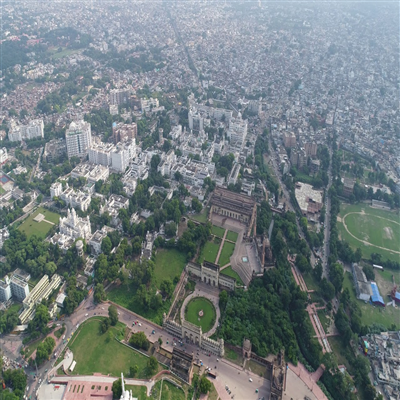
Lucknow City Aerial View

Lucknow City Aerial View
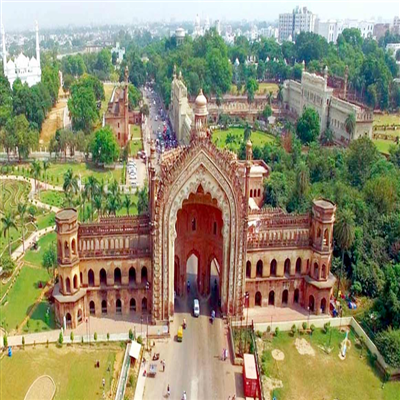
Rumi Darwaza Lucknow
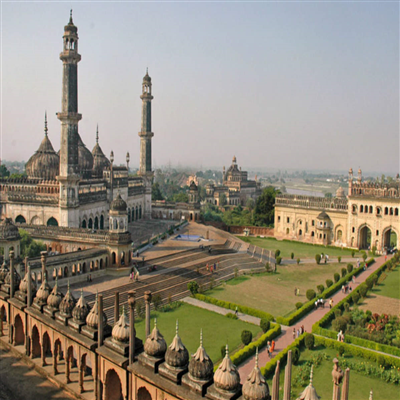
Bara Imambara Lucknow

Chota Imambara Lucknow
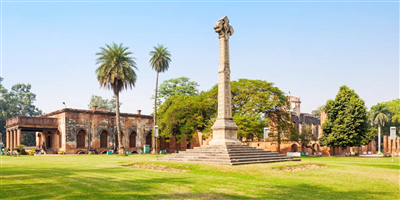
British Residency Lucknow
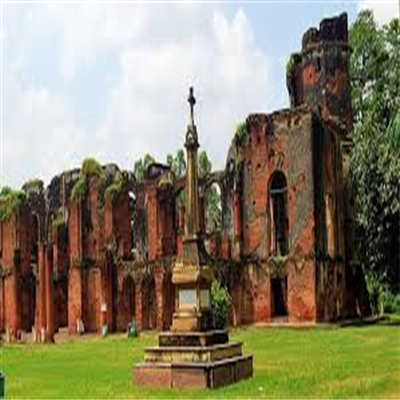
British Residency Lucknow
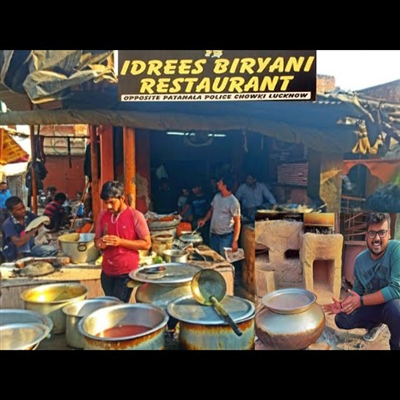
The Idrees Biryani
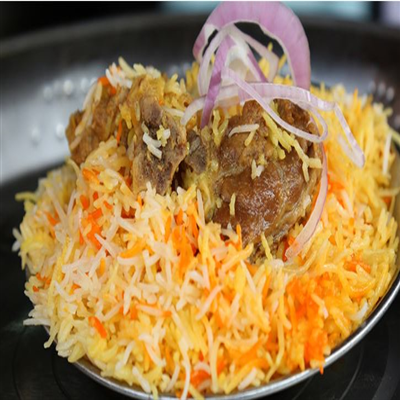
Mutton Biryani from Idrees Biryani
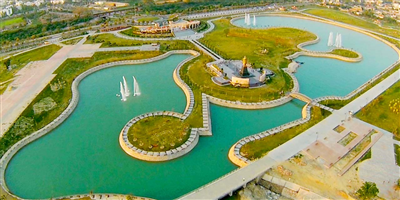
Janeshwar Mishra Park
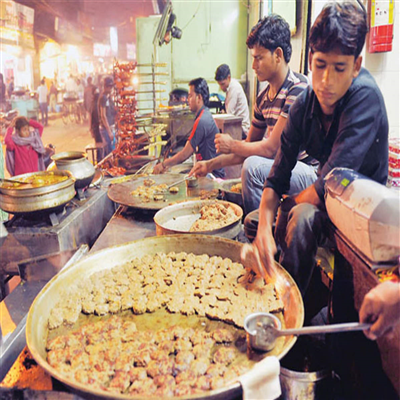
The Galouti Kebabs from Lucknow

Hazrat Ganj Square
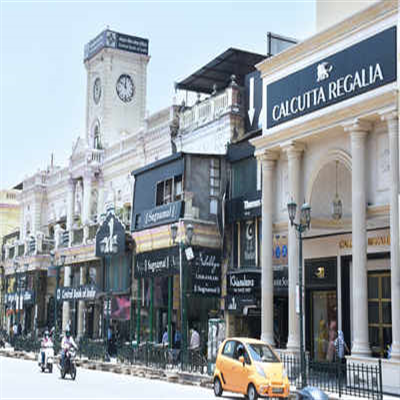
Shops at Hazrat Ganj Square
Day : 2 - The ancient Allahabad
Night stay at D1 - Allahabad, Uttar Pradesh, India
Distance from days start -180 Kms.
Star Rating of Hotel :




Halt D1 - Allahabad, Uttar Pradesh, India
Distance from days start -180 Kms.
Activities - Prayag tour, Boating to Triveni Sangam, Ghat Tour
Factors at the Halt include : Spiritual,Cultural / History,Small Boats / Canoes,Rivers / Lakes.
Allahabad city now officially known as Prayagraj city is a 4-hour drive away from Lucknow. Allahabad lies close to Triveni Sangam, the "three-river confluence" of the Ganges, Yamuna, and Sarasvati rivers. It plays a central role in Hindu scriptures. The city finds its earliest reference as one of the world's oldest known cities in Hindu mythological texts and has been venerated as the holy city of Prayaga in the ancient Vedas. The city is a very important place for Hindus and it is the site for the Prayag Kumbh Mela held once every 12 years, which is the biggest gathering of people in the world where up to 15 million people gather to take bathe and perform religious ceremonies in the Ganges river. At Allahabad, we can begin by visiting the splendid Allahabad Fort, which was built by the Mughal emperor Akbar in the year 1583. The fort is situated by the river Yamuna. After that by late afternoon we can go boating in the Ganges to visit the Triveni Sangam where we can clearly view the rivers of Ganga and Yamuna (Saraswati river now dried up), merging to make the Ganga river more mighty as it reaches the plains of Uttarpradesh. At the Sangam, you can bathe in the river if you have to for religious reasons. After that, we can view the evening religious ceremonies held by the ghats of the Ganges called the Ganga Aartis. After that we can retire to our hotel to spend the night.
Media and additional information available for the day's itinerary.
![]()
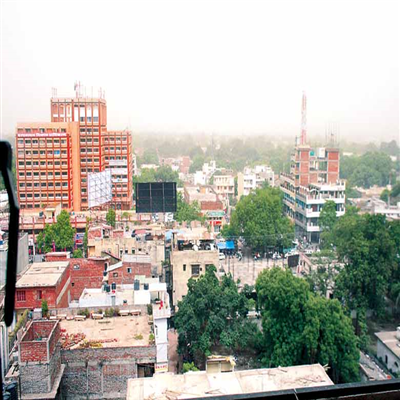
Allahabad City
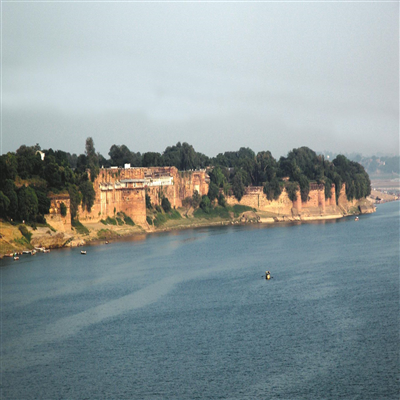
Allahabad Fort
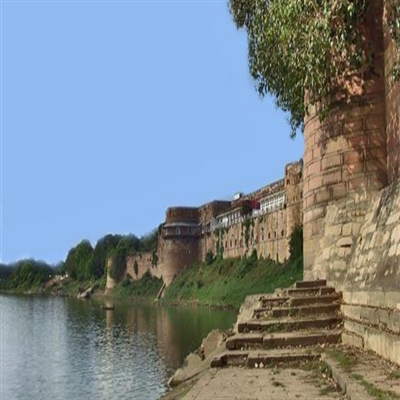
Allahabad Fort
.jpg)
Allahabad Fort

People bathing in Ganges during the Kumbh Mela
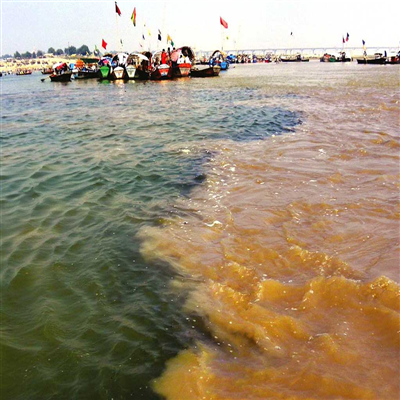
Triveni Sangam where the different colored rivers meet to become a mightier Ganga
.jpg)
Evening religious rituals by the Ganges ghats called Ganga Aartis
Day : 3 - The Mystical Varanasi
Night stay at E1 - Varanasi, Uttar Pradesh, India
Distance from days start -114 Kms.
Hotel - Hotel Rivatas
Star Rating of Hotel :





Halt E1 - Varanasi, Uttar Pradesh, India
Distance from days start -114 Kms.
Activities - Visit Ramnagar Fort, Varnasi Ghat Tour, Visit Shri Kashi Vishwanath temple, Boat ride and Evening Aarti at Dashashwamedh Ghat, Varnasi Food tours
Factors at the Halt include : Rivers / Lakes,Spiritual,Cultural / History,Small Boats / Canoes,Iconic Food Outlets,Unique Experiences.
Varanasi or Benaras as it is popularly called in India is once quoted by Mark Twain as 'Benares is older than history, older than tradition, older even than legend, and looks twice as old as all of them put together. It is clearly a mystical city which is most important for the Hindu religion like how Mecca is for Muslims and Rome is for Christians and Gaya is for Buddhists. Varanasi is 121 km East of Allahabad. It is a major religious hub in India, it is the holiest of the seven sacred cities in Hinduism and Jainism, and played an important role in the development of Buddhism and Ravidassia. Interestingly it also has grown to be the food capital of India for Vegetarian Food just like how Lucknow has become the food capital for Non-Vegetarian food in the country. Varanasi is Mystical, Magical and is an experience that has to be indulged in to believe. To most people, it has changed their lives and their perspectives about life irrevocably especially westerners who visit this holy city in search of spiritualism, culture shock, and new meanings of life. We do not have a very clear plan for Varanasi as it is best left to be explored at your own will as per your own interests that you can pick from this mixed bag of offerings from Varanasi. However, we have handpicked a few experiences to be indulged in across a 2-day tour of the city. We should definitely visit the beautiful Ramnagar fort which is a fortification in Ramnagar, located near the Ganga River on its eastern bank, opposite the Tulsi Ghat. The sandstone structure was built in the Mughal style in 1750 by Kashi Naresh Raja Balwant Singh. There is a museum also housed inside the fort premises where you can get an insight into the history of the fort. The museum is particularly famous for the artifacts and its unusual and rare collections of American vintage cars, bejeweled sedan chairs, ivory work, medieval costumes, gold, and silver brocaded royal Palakis (Palanquins in the shape of a lotus flower). It has elephant saddles carved out of silver, jewelry, costumes made of kimkhwa silk (finest product of the weavers of Varanasi), an impressive armory hall with swords, old guns from Africa, Burma, and Japan. The old armored matchlocks, ornate hookahs, daggers, portraits of Maharajas, black musical instruments have turned white because of neglect of maintenance and there is a rare astronomical clock. This clock shows not only the time but also the year, month, week, and day, and the astronomical details of the Sun, Moon, and other planets. Then we can visit the famous Kashi Vishwanath Temple, which is one of the most famous Hindu temples dedicated to Lord Shiva. The Temple stands on the western bank of the holy river Ganga and is one of the twelve Jyotirlingas, or Jyotirlingams, the holiest of Shiva Temples. By late afternoon we can visit the world-famous ghats of Varanasi by river Ganges. We can do boating in Ganga which can give us a better view of the various ghats which there are in total 88 ghats in the whole of Varanasi. 'Ghats' as it is called is literally riverfront steps leading to the banks of the River Ganges. Most of the ghats are bathing and puja ceremony ghats, while two ghats, Manikarnika and Harishchandra, are used exclusively as cremation sites. The most popular ghats in Varanasi are Assi ghats, Dashashwamedh Ghat and Manikarnika Ghat. We can watch the splendor of the evening rituals being conducted at the Dashwamedh Ghat called the Ganga Aarti. After that, we can visit a few iconic food outlets to relish some of the famous chats and Vegetarian that Varanasi is famous for. Also we have to have a pan from the famous Pan Bhandar of Benaras before retiring to our hotel rooms.
Media and additional information available for the day's itinerary.
![]()
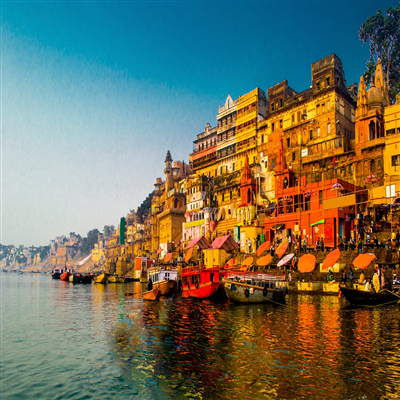
Ghats in Varanasi

Ghats in Varanasi
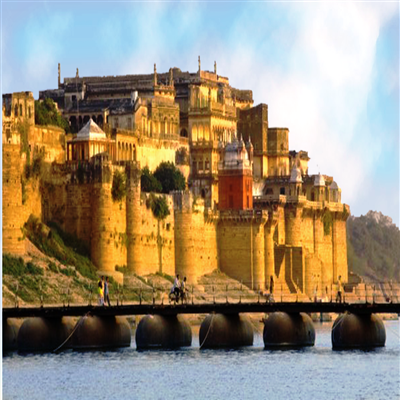
Ramnagar Fort
.jpg)
Ramnagar Fort
.jpg)
Ramnagar Fort
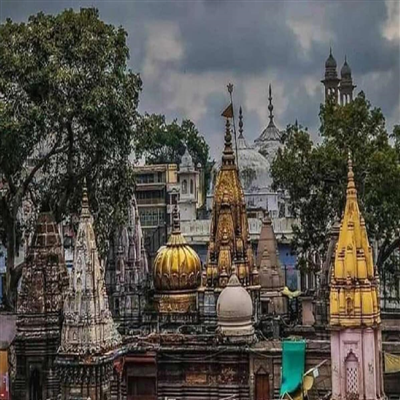
Kashi Vishwanath temple with its Golden Dome
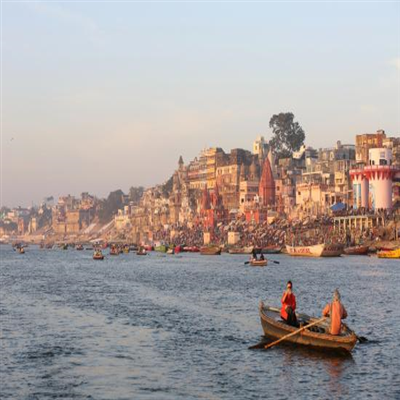
Boating in Ganga
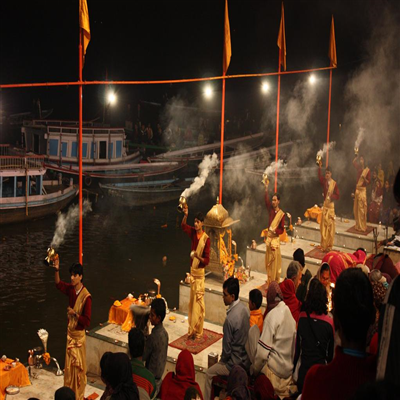
Evening religious rituals at Dashwamedh Ghat
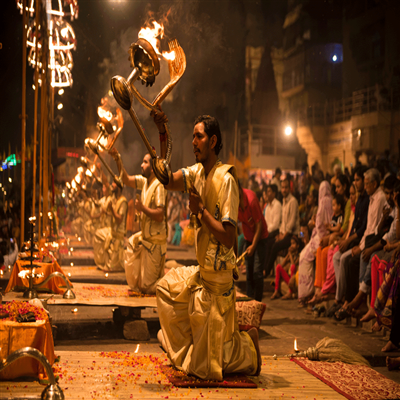
Evening religious rituals at Dashwamedh Ghat
.jpg)
Street food in Varanasi
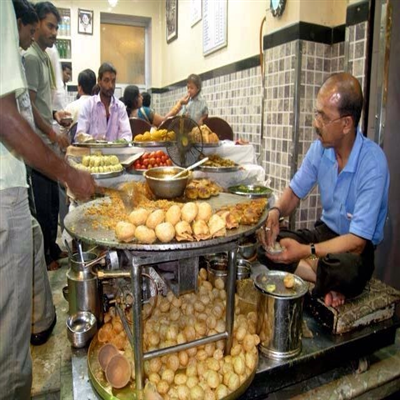
Chaats at Varanasi
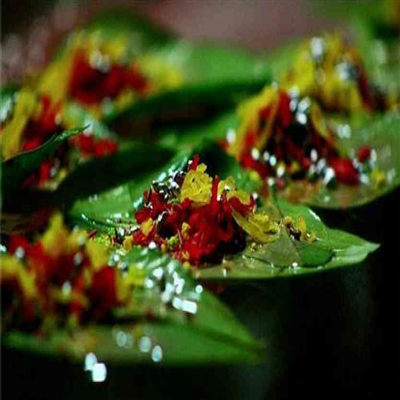
Benarasi Pan
Day : 4 - More of Varanasi
Night stay at F1 - Varanasi, Uttar Pradesh, India
Distance from days start -0 Kms.
Hotel - Hotel Rivatas
Star Rating of Hotel :





Halt F1 - Varanasi, Uttar Pradesh, India
Distance from days start -0 Kms.
Activities - Food Tour of Iconic eateries, Chaat and Pan centers in Varanasi, Visit BHU University, Visit Alamgir Masjid, Visit the Monkey temple, Evening Aarti
Factors at the Halt include : Rivers / Lakes,Spiritual,Cultural / History,Great Views,Iconic Food Outlets.
On Day 4 we can visit the largest university campus in Asia which is situated in Varanasi, which is the BHU or Benaras Hindu University. After that, we can visit the historic Alamagir Mosque which is located at a prominent site above the Panchganga Ghat. The ghat has broad steps that go down to the Ganges. The Mughal emperor Aurangzeb built the mosque in 1669. The mosque is architecturally a blend of Islamic and Hindu architecture. The mosque has high domes and minarets. The Panchaganga Ghat where the mosque is situated is where five streams join into Ganga. Then we can visit the Monkey temple, like how it is called normally but originally the Durga Temple which is one of the most famous temples in the holy city of Varanasi. The temple is called the Monkey temple due to the large number of monkeys around the temple premises. By evening we can visit the Assi Ghats the most famous among the Ghats in Varanasi and see the Ganga Aarti. We can do more street food tours during the day exploring the best of the city food and chats.
Media and additional information available for the day's itinerary.
![]()

BHU University
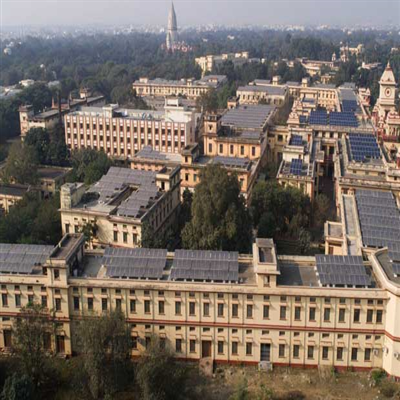
BHU University
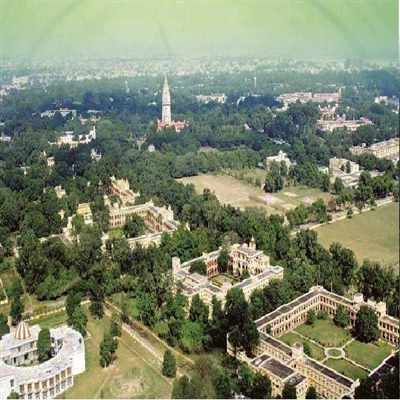
BHU University campus
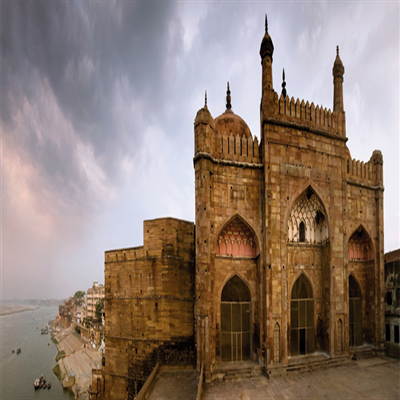
Alamgir Mosque Varanasi
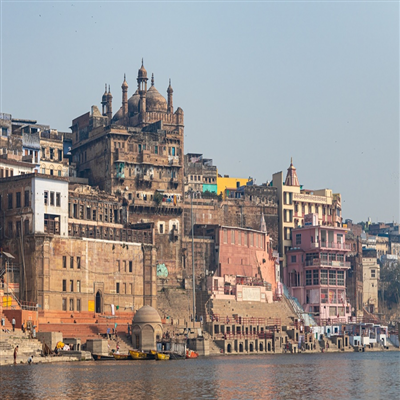
Alamgir Mosque Varanasi
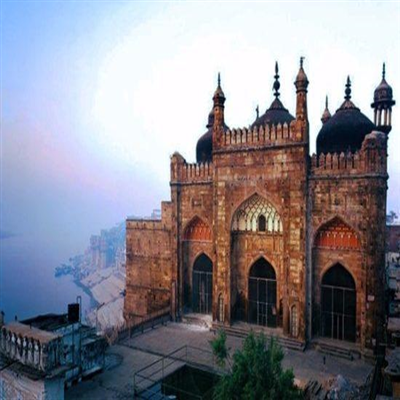
Alamgir Mosque Varanasi
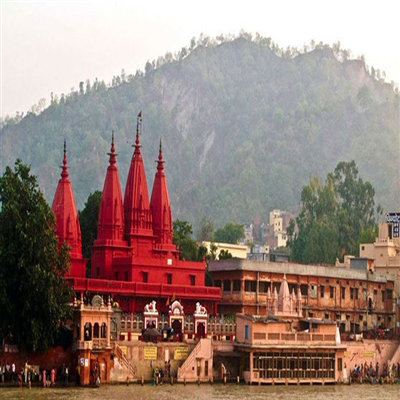
Monkey temple Varanasi
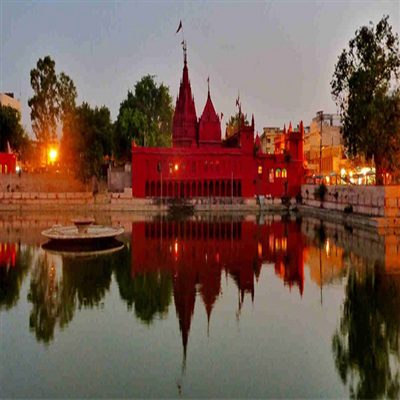
Monkey temple Varanasi
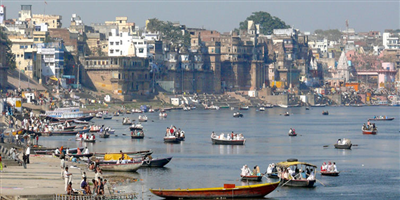
Assi Ghat Varanasi

Assi Ghat Varanasi
Day : 5 - Buddhisms holiest city
Night stay at G1 - Gaya, Bihar, India
Distance from days start -212 Kms.
Star Rating of Hotel :





Halt G1 - Gaya, Bihar, India
Distance from days start -212 Kms.
Activities - At Bodhgaya Visit Bodhi Tree, Mahabodhi temple, Visit the Great Buddha statue, Visit Metta Buddharam Temple
Factors at the Halt include : Spiritual,Cultural / History.
Bodhgaya in Bihar state is the holiest place for Buddhists as it is the Bodhgaya where Buddhas have attained salvation or 'Nirvana' as it is called. Bodhgaya is a long 5.5 hours away from Varanasi and we can expect to reach by afternoon about 3 PM. Since all the sights are located close by it is still possible for us to visit the important sites in the same afternoon itself. The most important site we shall visit the Bodhgaya is the famous Mahabodhi temple, the Bodhi tree under which Buddha sat in meditation and attained salvation. The Mahabodhi Temple is a UNESCO World Heritage Site and an ancient, but much rebuilt and restored, Buddhist temple. The temple marks the location where the Buddha is said to have attained enlightenment. The descendant of the Bodhi Tree under which Buddha gained enlightenment, has been a major pilgrimage destination for Hindus and Buddhists for well over two thousand years, and some elements probably date to the period of Ashoka (died c. 232 BCE).
Then we can visit the Great Buddha statue a massive 24-meter statue of Buddha representing the Buddha seated in a meditation pose, or dhyana mudra, on a lotus in the open air. And the last sight of visit for the day would be the delightful Metta Buddharam Temple, a Thai temple situated a Bodhgaya. The temple is appealing with an outer shell of stainless steel and a decorative mosaic using mirrors. The temple sees the Thai Temple style of architecture. The temple lacks many colors and is a great example of simplicity. Roof tiles of the temple are pressed stainless steel, while the interior is sheeted stainless steel. The main temple floor is made of wood. Underneath the temple is the marble-floored meditation room offering a perfect environment to the devotees for meditation. The temple is decorated with numerous sculptures, which are hand-made, from a mixture of white cement, clay, and epoxy.
Media and additional information available for the day's itinerary.
![]()
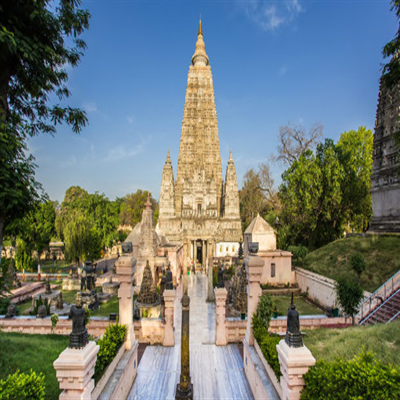
The Mahabodhi temple
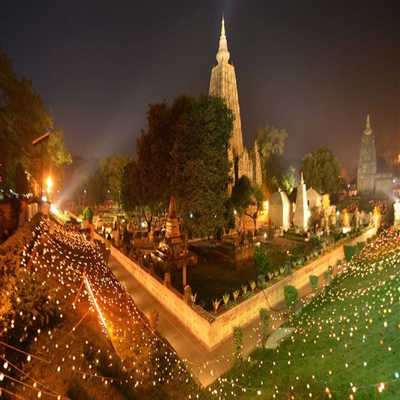
Mahabodhi temple illuminated in the night
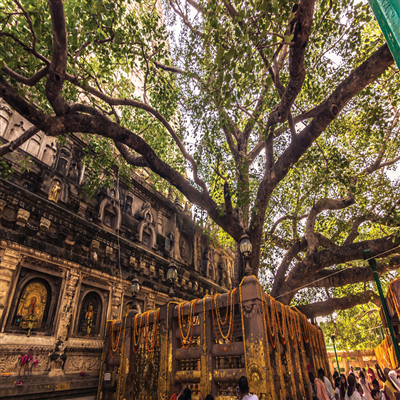
The Bodhi tree
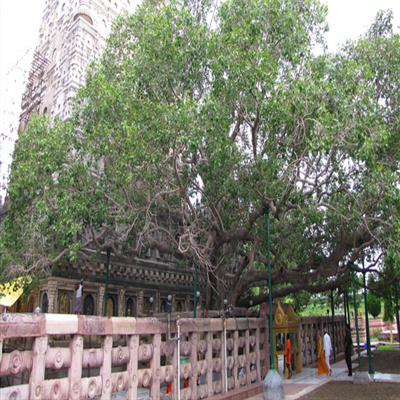
The Bodhi tree literally over growing into the Mahabodhi temple
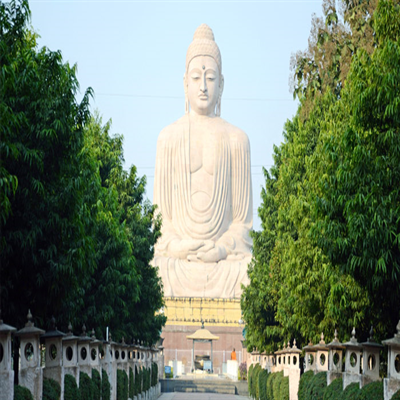
The Great Buddha Statue
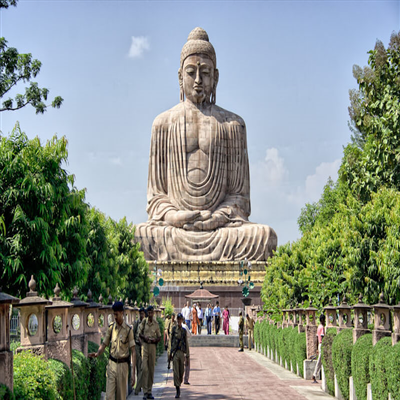
The Great Buddha Statue
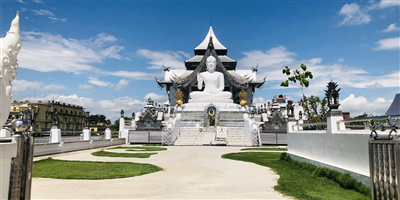
Metta Buddharam temple
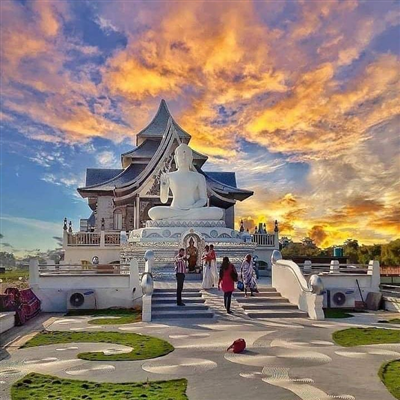
Another view of Metta Buddharam temple
Day : 6 - Patna city
Night stay at H1 - Patna, Bihar, India
Distance from days start -89 Kms.
Star Rating of Hotel :





Halt H1 - Patna, Bihar, India
Distance from days start -89 Kms.
Activities - Patna City tour, Visit Golghar, Gandhi Setu, Visit Patna Sahib Gurudwara, Buddha Smriti Park
Factors at the Halt include : Spiritual.
A 4-hour drive from Bodhgaya will take us to Patna city, historically known as Pataliputra, which is the capital and largest city of the state of Bihar. One of the oldest continuously inhabited places in the world, Patna was founded in 490 BCE by the king of Magadha. Pataliputra was a seat of learning and fine arts. It was home to many astronomers and scholars including Aryabhata, Vatsyayana, and Chanakya. During the Maurya period (around 300 BCE) its population was about 400,000. Patna served as the seat of power, and political and cultural center of the Indian subcontinent during the Maurya and Gupta empires. Today Patna is a modern and thriving city by the banks of the Ganges river. While in Patna we just have enough time to explore a few spots in the city. The Gandhi Setu bridge in Patna that connects the north and south banks of the Ganges river at an astonishing length of 5.75 km is a must-visit while in Patna. We can also visit the famous Sikh Gurudwara or temple of worship for Sikh religion, called the Patna Sahid Gurudwara. It was to commemorate the birthplace of Guru Gobind Singh, the tenth Guru of the Sikhs on December 1666. It was built by Maharaja Ranjit Singh (1780-1839), the first Maharaja of the Sikh Empire. We can also visit the Golghar, the circular-shaped massive granary in Patna. According to a contemporary inscription at its base, the Golghar in Patna was intended to be just the first of a series of huge grain stores. In the end, however, no others were ever built. The granary was "part of a general plan … for the perpetual prevention of famine in these provinces" ordered in 1784 by Warren Hastings, the then Governor-General of India. Built-in the Stupa architecture, the building has a height of 29 m. It is pillar-less with a wall of thickness of 3.6 m at the base. One can climb at the top of the Golghar through the 145 steps of its spiral stairway around it. The spiral staircase was designed to facilitate the passage of the workers who loaded and unloaded the grain in the granary, who had to carry grain bags up one flight, deliver their load through a hole at the top, and descend the other stairs.
The Buddha Smriti Park in the center of the city is a spot to relax in the evening before we retire to our hotel room to spend the night.
Media and additional information available for the day's itinerary.
![]()
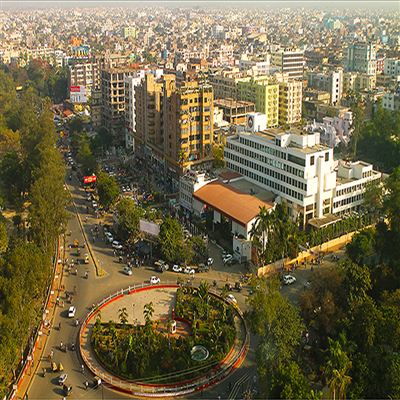
Patna City
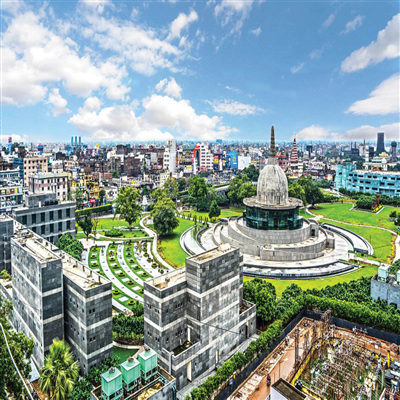
Patna City
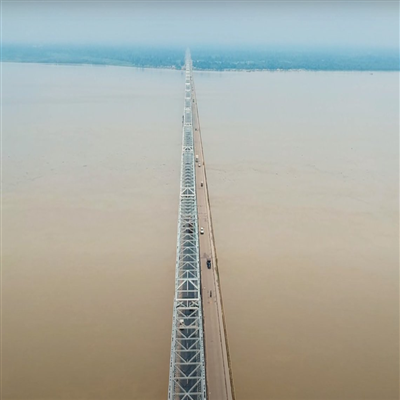
Gandhi Sethu Bridge across Ganga
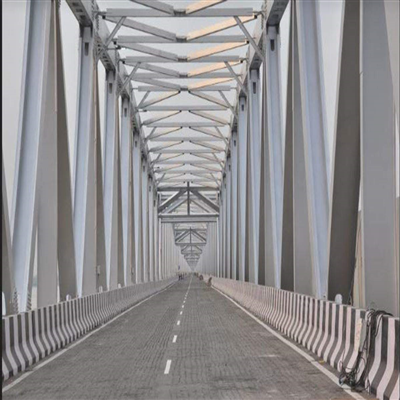
Gandhi Sethu the unending bridge
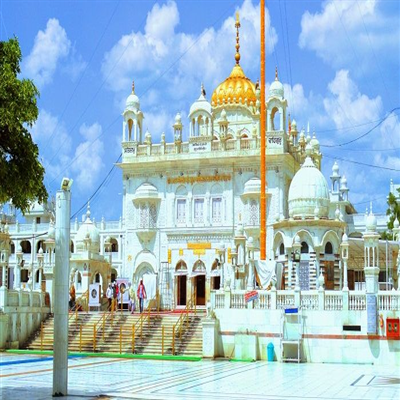
Patna Sahib Gurudwara
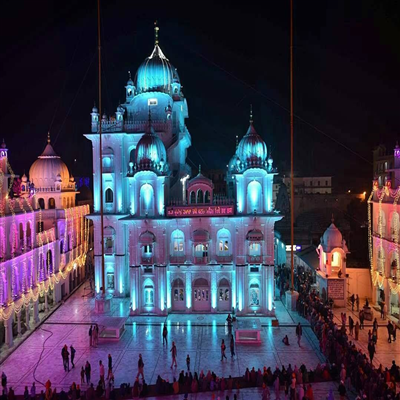
Patna Sahib Gurudwara illuminated in the night

Inside Patna Sahib Gurudwara
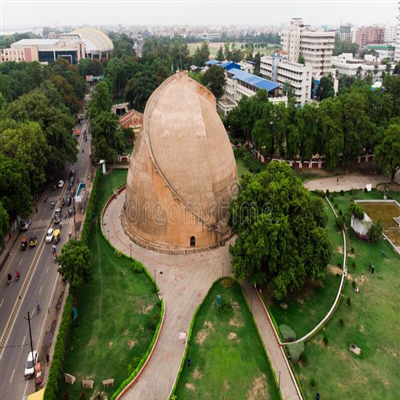
Golghar Aerial View
.jpg)
Golghar
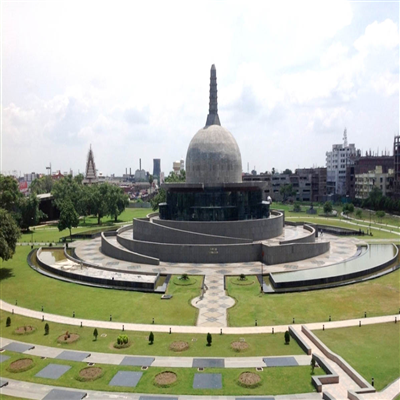
Budha Smriti Park Patna
Day : 7 - Entering Nepal
Night stay at I1 - Birgunj, Nepal
Distance from days start -162 Kms.
Star Rating of Hotel :




Halt I1 - Birgunj, Nepal
Distance from days start -162 Kms.
Activities - Birgunj city tour
Factors at the Halt include : Cultural / History.
On Day 7 we shall leave Patna and head north towards Nepal to make our first stop in Nepal's Birgunj city. Birgunj is about 6 hours drive from Patna and we shall hope to reach it by late afternoon. At the Nepal checkpoint, we will need to be ready with the passports or any other Govt issued Indian ID cards such as an Aadhaar or Election card. Birgunj is the third-largest city in Nepal but a very unimpressive one, so we shall straight go-ahead to check into our hotel and relax for the rest of the day.
Media and additional information available for the day's itinerary.
![]()
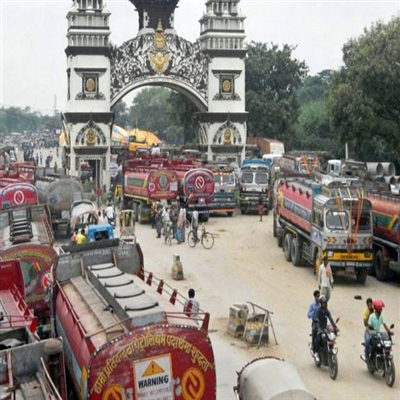
Indo Nepal Border
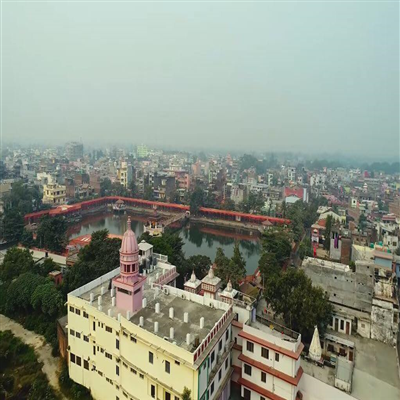
Birgunj City
Day : 8 - Magical Kathmandu
Night stay at J1 - Kathmandu, Nepal
Distance from days start -87 Kms.
Star Rating of Hotel :





Halt J1 - Kathmandu, Nepal
Distance from days start -87 Kms.
Activities - Kathmandu city tour, Visit Bodha Stupa, Pashupatinath Temple, Swayambhunath temple, Kathmandu Durbar Square
Factors at the Halt include : Hills,Spiritual,Cultural / History.
On Day 5 we shall set out on a 5 hour trip through the Himalayan mountains to reach the magical kingdom of Kathmandu, the capital of Nepal. Kathmandu is also known as the city of temples and it is the largest city of Nepal, with a population of around 1 million. The city stands at an elevation of approximately 1,400 meters above sea level in the bowl-shaped Kathmandu Valley in central Nepal. After we reach Kathmandu we can check into our hotels first to freshen up before we set out on our city sightseeing tour. We can begin with the Kathmandu Darbar square, in front of the old royal palace of the former Kathmandu Kingdom is one of three Durbar (royal palace) Squares in the Kathmandu Valley in Nepal, all of which are UNESCO World Heritage Sites. Several buildings in the Square collapsed due to a major earthquake on 25 April 2015. Durbar Square was surrounded by spectacular architecture and vividly showcases the skills of the Newar artists and craftsmen over several centuries. Then we can visit the Swayambhunath stupa, which is an ancient religious complex atop a hill in the Kathmandu Valley, west of Kathmandu city. The complex consists of a stupa, a variety of shrines, and temples, some dating back to 500 CE. After that, we can head to the eastern part of the city to see the famous Pashupathinath temple, a sacred Hindu temple complex that is located on the banks of the Bagmati River. The temple serves as the seat of Pashupatinath. This temple complex was inscribed on the UNESCO World Heritage Sites list in 1979. This "extensive Hindu temple precinct" is a "sprawling collection of temples, ashrams, images, and inscriptions raised over the centuries along the banks of the sacred Bagmati river" and is included as one of the seven monument groups in UNESCO's designation of Kathmandu Valley. After that almost on the outskirts of Kathmandu, there is the famous Boudha stupa, the outskirts of Kathmandu, with its massive mandala makes it one of the largest spherical stupas in Nepal and the world. The influx of large populations of refugees from Tibet has seen the construction of over 50 gompas (Tibetan convent) around Boudha. As of 1979, Boudha Stupa is a UNESCO World Heritage Site. Along with Swayambhu, it is one of the most popular tourist sites in the Kathmandu area. With that, we shall be ready to return back to our hotels to settle in for the night.
Media and additional information available for the day's itinerary.
![]()
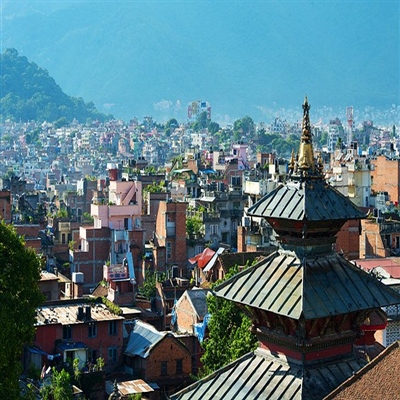
Kathmandu City
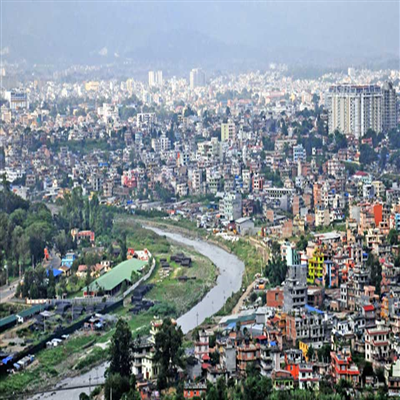
Kathmandu City

Kathmandu Darbar Square
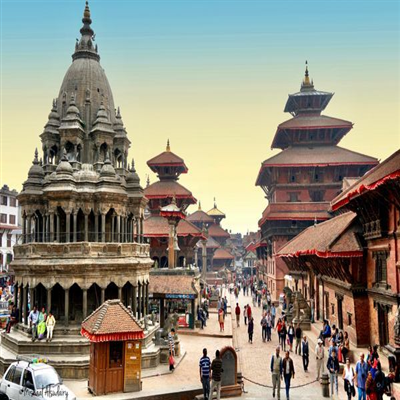
Kathmandu Darbar Square
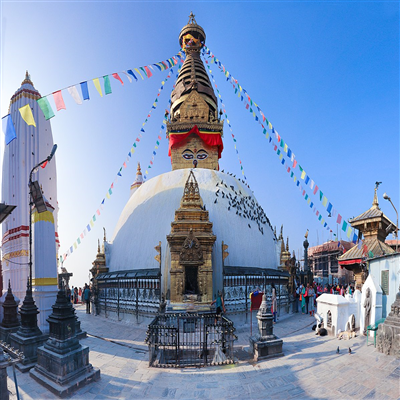
Swayambhunath stupa
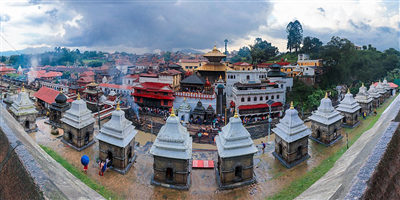
Pashupathinath Temple Complex
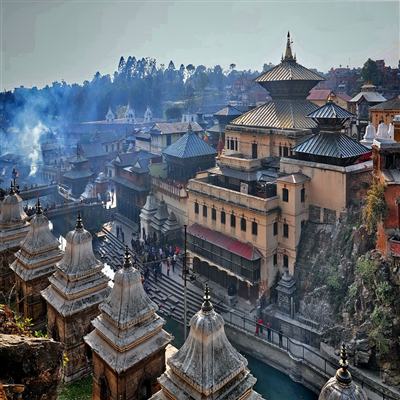
Pashupathinath Temple Complex
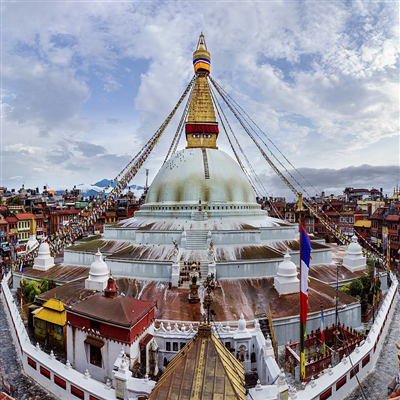
Boudhanath or The Boudha Stupa
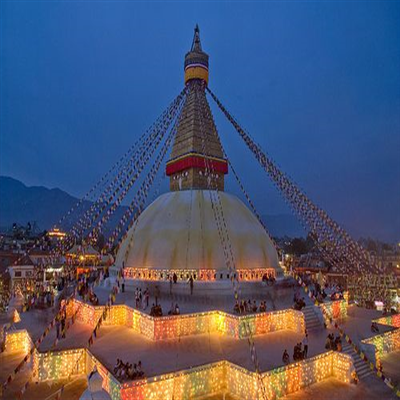
The Boudha Stupa illuminated in the night
Day : 9 - Bhaktapur
Halt K1 - Bhaktapur, Nepal
Distance from days start -23 Kms.
Activities - Bhaktapur Durabar Square and heritage city tour, visit patan durbar Kathmandu
Factors at the Halt include : Shopping,Spiritual,Cultural / History.
Night stay at L2 - Kathmandu, Nepal
Distance from days start -0 Kms.
Bhaktapur is a city about 13 kilometers east of Kathmandu, and it was the largest of the three Newa kingdoms of the Kathmandu Valley and was the capital of Nepal during the great 'Malla Kingdom' until the second half of the 15th century. It has a population of more than 81,728, of which the vast majority are still New Nepa mi. Historically more isolated than the other two kingdoms, Kathmandu and Patan, Bhaktapur has a distinctly different form of Nepal Bhasa language. Bhaktapur has the best-preserved palace courtyards and old city center in Nepal and is listed as a World Heritage Site by UNESCO for its rich culture, temples, and wood, metal, and stone artworks. In Bhaktapur, the major point of attraction is the Bhaktapur city square which looks straight out of a 15-century town square. It houses the royal palace of the old Bhaktapur Kingdom, and It is a UNESCO World Heritage Site. While the complex consists of at least four distinct squares (Durbar Square, Taumadhi Square, Dattatreya Square, and Pottery Square), the whole area is informally known as the Bhaktapur Durbar Square and is a highly visited site in the Kathmandu Valley. The Durbar Square was severely damaged by the earthquake in 1934 and hence appears more spacious than the others, in Kathmandu and Patan. Originally, there were 99 courtyards attached to this place, but now only 6 remain. Before the 1934 earthquake, there were 3 separate groups of temples. Currently, the square is surrounded by buildings that survived the quake. On 25 April 2015, another major earthquake damaged many buildings in the square. The main temple in Bhaktapur's square lost its roof, while the Vatsala Devi temple, famous for its sandstone walls and gold-topped pagodas, was also demolished. Bhaktapur city still has enough elements to captivate a traveler with its unique architectural style of the buildings and the old world charm. On the way back to Kathmandu we can visit Patan Darbar Square Patan which is situated at the center of the city of Lalitpur in Nepal. It is one of the three Durbar Squares in the Kathmandu Valley, all of which are UNESCO World Heritage Sites. One of its attractions is the ancient royal palace where the Malla Kings of Lalitpur resided. The Durbar Square is a marvel of Newar architecture. The square floor is tiled with red bricks. There are many temples and idols in the area in and around Patan Durbar Square. A center of both Hinduism and Buddhism, Patan Durbar Square has 136 courtyards and 55 major temples. The square was also heavily damaged by the earthquake in April 2015.
Media and additional information available for the day's itinerary.
![]()
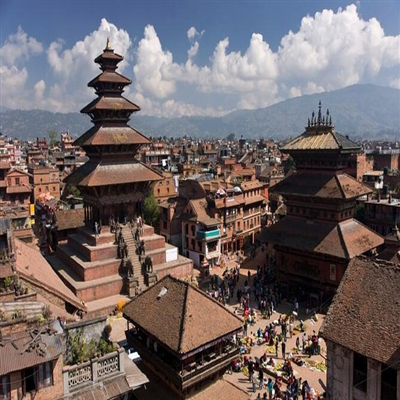
Bhaktapur city
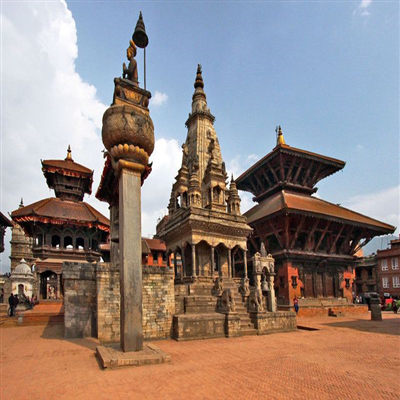
Bhaktapur Darbar Square
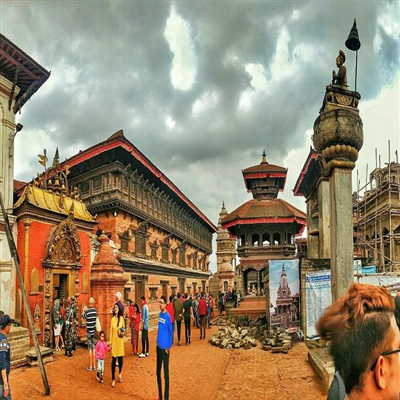
Bhaktapur Darbar Square
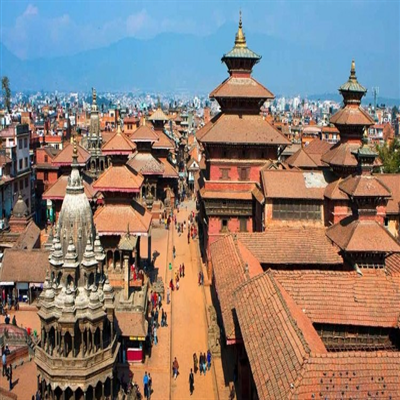
Patan Darbar Square
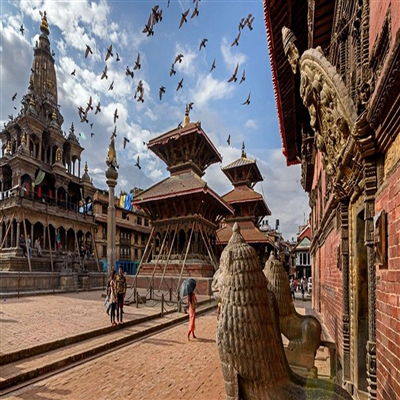
Patan Darbar Square
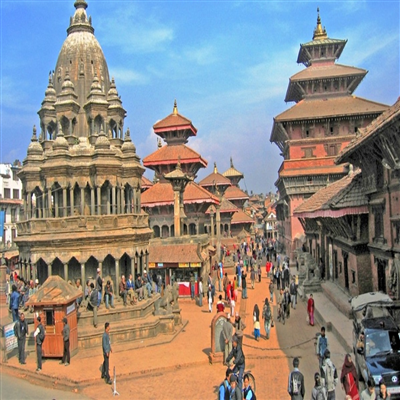
Patan Darbar Square
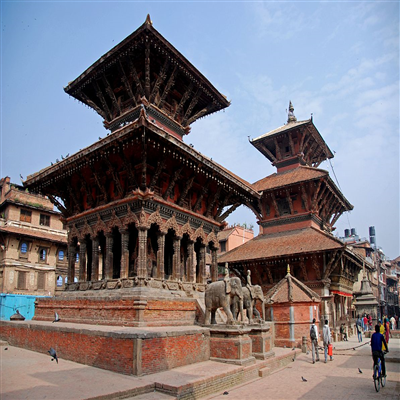
Patan Darbar Square
Day : 10 - A lovely drive to Pokhara
Night stay at M1 - Pokhara, Nepal
Distance from days start -142 Kms.
Star Rating of Hotel :





Halt M1 - Pokhara, Nepal
Distance from days start -142 Kms.
Activities - Boating at Phewa Lake, Visit Devis Falls and Gupteshwar caves
Factors at the Halt include : Hills,Great Views,Small Boats / Canoes,Caves / Springs.
The beautiful hill city of Pokhara is a 6-hour drive from Kathmandu. It is the second-largest city in Nepal and it is also home to the Annapurna range, where three out of the ten highest peaks in the world—Dhaulagiri, Annapurna I, and Manaslu—is within 24–56 km of the Pokhara valley. While Kathmandu is the heritage capital of Nepal, Pokhara is considered the tourism capital of Nepal, being a base for trekkers undertaking the Annapurna Circuit through the Annapurna Conservation Area region of the Annapurna ranges in the Himalayas. The city is on the shore of Phewa Lake and sits at an elevation of approximately 822m. On reaching Pokhara we can check into our Lakeside hotel to freshen up and by late afternoon we can step out to explore some of the must-do things while in Pokhara. Needless to say, we shall begin with the obvious which is Boating at Phewa lake. Depending on the time the boating gets over we can also visit the Gupteshwor Mahadev Cave, a cave located opposite Davis Fall, the water from Davis fall passes through this cave. Gupteshwor Mahadev cave is one of the major attractions of Pokhara. We can visit the Davis falls also after exploring the caves.
Media and additional information available for the day's itinerary.
![]()
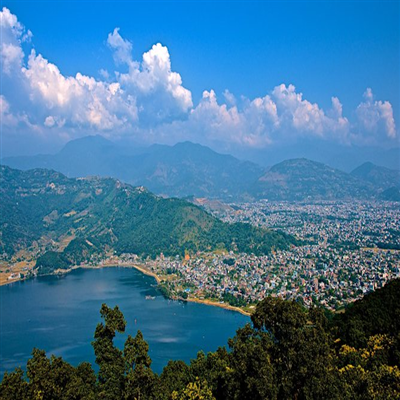
Pokhara city
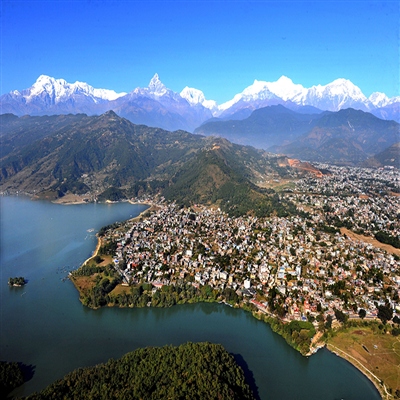
Pokhara city
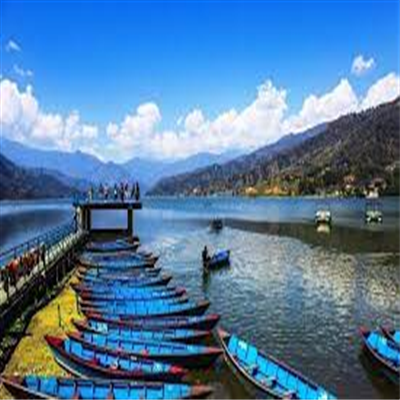
Phewa Lake
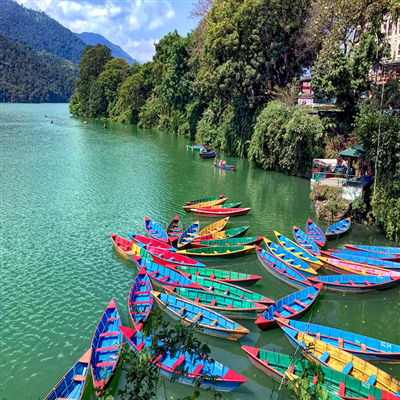
Colorful boats of Phewa Lake
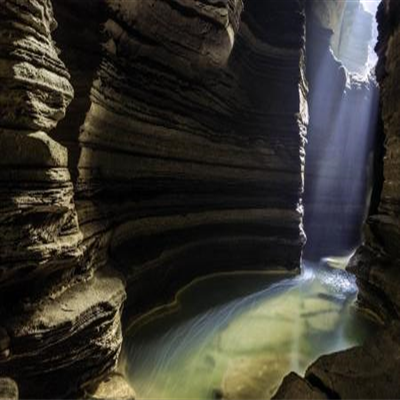
Gupteshwar caves Pokhara
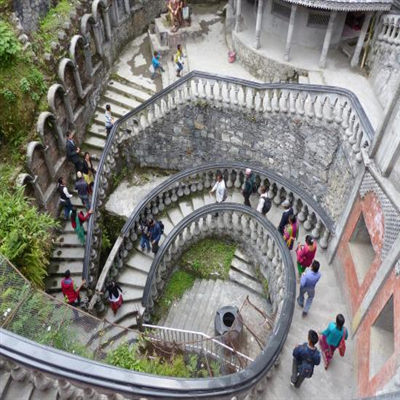
Entrance to Gupteshwar Caves
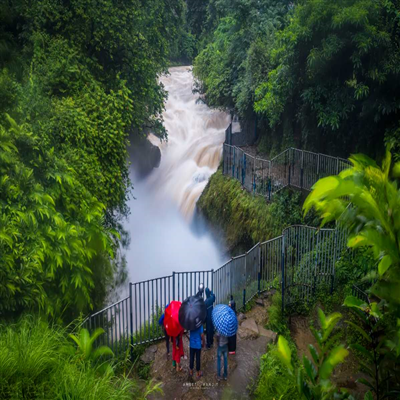
Davis Falls
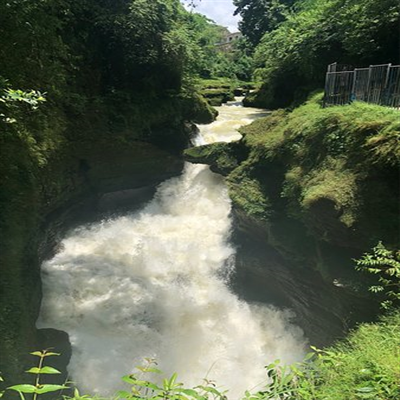
Davis falls
Day : 11 - Paragliding at Sarangkot
Night stay at N1 - Pokhara, Nepal
Distance from days start -0 Kms.
Star Rating of Hotel :





Its a Special Day
Because today we have : Snow.Flights, !!!
Halt N1 - Pokhara, Nepal
Distance from days start -0 Kms.
Activities - Hiking to Saragkot Hills, Paragliding In Sarangkot
Factors at the Halt include : Snow,Flights,Treks,Great Views,Adventure.
On Day 11 we shall head to Sarangkot hills which is just about 10 km from Pokhara. Sarangkot is famous for its hill views and adventure sports. We can do a 30 minutes Paragliding over the lovely hills of Sarangkot. On the way back we can take a detour and head towards Begnas lake. Begnas lake is famous for its beautiful views around. Boating in Begnas lake will be an amazing experience.
Media and additional information available for the day's itinerary.
![]()
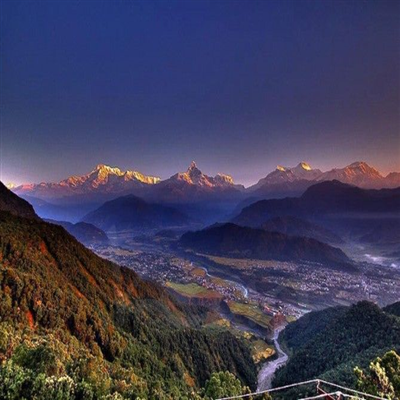
Sarangkot Views
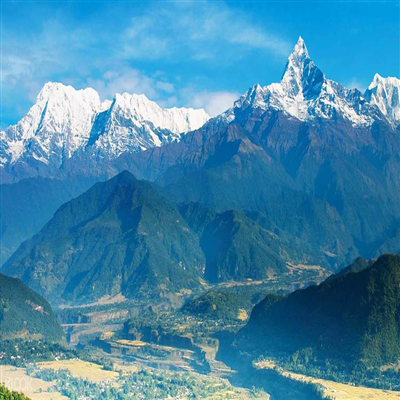
Sarangkot Views

Paragliding at Sarangkot
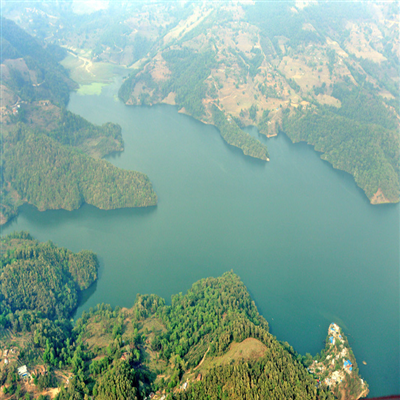
Begnas Lake
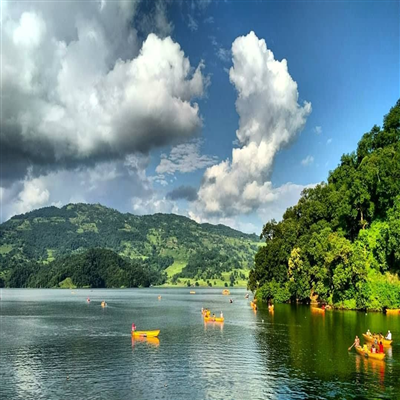
Begnas Lake
Day : 12 - Drive to Lumbini
Night stay at O1 - Lumbini, Nepal
Distance from days start -111 Kms.
Star Rating of Hotel :





Halt O1 - Lumbini, Nepal
Distance from days start -111 Kms.
Activities - Visit MayaDevi temple, Bodhi tree, Ashoka Pillar, Boating through the historic sites
Factors at the Halt include : Hills,Spiritual,Cultural / History,Small Boats / Canoes.
On Day 12 we shall set out to Lumbini which is on the Indian Border and about 6 hours of drive away from Pokhara. It is the birthplace of Siddhartha Gautama at around 563 BCE. Gautama, who achieved Enlightenment sometime around 528 BCE, became the Buddha and founded Buddhism. Lumbini has a number of older temples, including the Mayadevi Temple, and various new temples, funded by Buddhist organizations from various countries. Many monuments, monasteries, and a museum are also within the holy site. Also, there is the Puskarini, or Holy Pond, where the Buddha's mother took the ritual dip prior to his birth and where he had his first bath. At other sites near Lumbini, earlier Buddhas were, according to tradition, born, then achieved ultimate Enlightenment and finally relinquished their earthly forms. Lumbini was made a World Heritage Site by UNESCO in 1997. On reaching Lumbini we can check into the hotel and later on towards late afternoon we can set out to visit the Mayadevi temple, Bodhi tree, and the Ashoka pillar all set in the same site. Maya Devi Temple is an ancient Buddhist temple situated at the UNESCO World Heritage Site of Lumbini, Nepal. It is the main temple at Lumbini, a site traditionally considered the birthplace of Gautama Buddha. The temple stands adjacent to a sacred pool (known as Puskarni) and a sacred garden. The archaeological remains at the site were previously dated to the third-century BCE brick buildings constructed by Ashoka. The Bodhi Tree in Lumbini is located in the premises of the Maya Devi Temple complex right next to the shrine on the banks of the serene Maya Devi Pond. Buddhist monks often sit under the tree meditating and chanting spiritual scripts. The tree is an age-old Peepal tree clad in colorful prayer flags, Locals believe that wishes made while tying a colorful prayer flag are often granted. Also on the site is the Ashoka pillar inscription identifying Buddha's birthplace in Nepal. Connecting the Mayadevi temple sites and the World Peace Pagoda site with a distance of 3.2 km is a canal called Central Canal. From the Mayadevi temple site, we can go boating on the canal to the World Peace Pagoda or Shanti Stupa. World peace Pagoda is a Buddhist monument in Lumbini, Nepal. It was designed and built by Japanese Buddhists at a cost of about a million US dollars.
Media and additional information available for the day's itinerary.
![]()
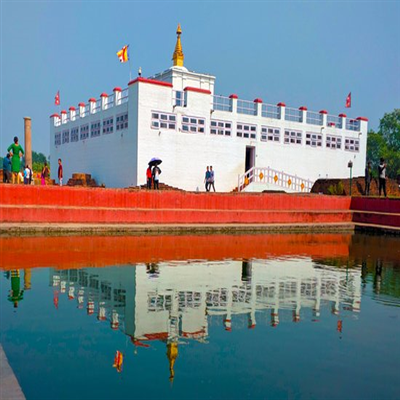
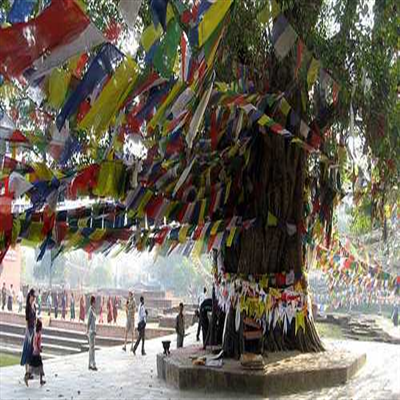
The Bodhi tree in Lumbini
.jpg)
Ashoka Pillar in Lumbini
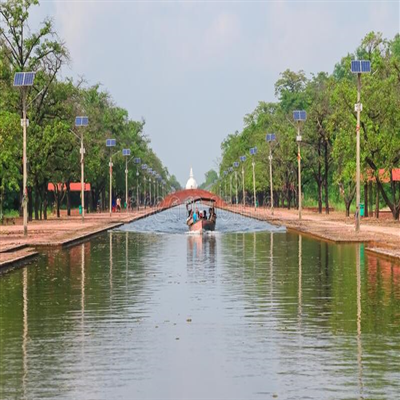
Central Canal
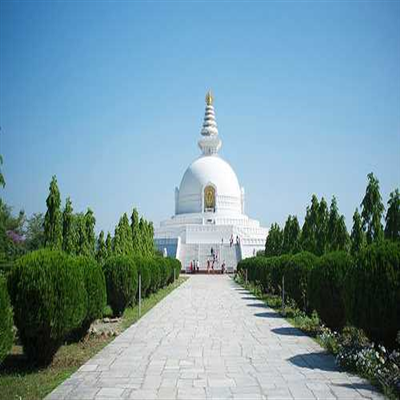
World Peace Pagoda
Day : 13 - Ayodhya and to Lucknow
Halt P1 - Ayodhya, Uttar Pradesh, India
Distance from days start -254 Kms.
Activities - Visit Rama Janma Bhoomi, Visit Gulab Bari, Visit Ramkot Fort, Visit Treta KeThakur
Factors at the Halt include : Spiritual,Cultural / History.
Night stay at Q2 - Lucknow, Uttar Pradesh, India
Distance from days start -475 Kms.
Star Rating of Hotel :




Halt Q2 - Lucknow, Uttar Pradesh, India
Distance from days start -475 Kms.
Activities - Lucknow Food Tour, Visit Ambedkar Memorial Park.
Factors at the Halt include : Iconic Food Outlets.
A 3.5-hour drive from Lumbini will get us to Ayodhya, which is the birthplace of Lord Sri Rama in the Hindu religion and setting of the epic Ramayana. This legendary city is a mythical place that came to be identified with the present-day Ayodhya only during the Gupta period around the 4th–5th century AD. In Ayodhya, we shall of course begin by visiting the Ram Janmabhoomi (literally, "Rama's birthplace") which is the site that is believed to be the birthplace of Rama, the seventh avatar of the Hindu deity Vishnu. The Ramayana states that the location of Rama's birthplace is on the banks of the Sarayu river in a city called "Ayodhya". Then we shall visit the Gulab Bari (lit.?'Garden of Roses'), the Tomb of Nawab Shuja-ud-Daula is in Faizabad, Uttar Pradesh, India. This place has a good collection of roses of various varieties set by the sides of water fountains. Gulab Bari is the maqbara (Mausoleum) of Nawab Shuja-ud-Daula, the third Nawab of Oudh (now Faizabad) on the campus. Then we can visit the Treta Ke Thakur temple. This temple stands at the place where Rama is said to have performed the Ashvamedha Yajna. About 300 years ago the Raja of Kulu built a new temple here, which was improved by Ahalyabai Hokar of Indore during 1784. At the same time, the adjoining Ghats were also built. The initial idols in black sandstone were recovered from Saryu and placed in the new temple, famous as Kaleram-ka-Mandir. Then there is this interesting site called Ramkot Fort. Perched atop a hill, Ramkot Temple is the chief place of worship in Ayodhya. An ancient citadel, it lies on an elevated platform and, as per popular belief, marks the site of Lord Ramas fort. Thousands of devotees visit this temple throughout the year but the best time is during the Hindu calendar month of Chaitra (March-April) when the birth anniversary of Lord Rama Ramnavmi is celebrated with great fervor. Various cultural programs are organized at the temple in honor of Lord Rama, and make for an interesting experience. The temple offers sweeping panoramic views of the entire city, including a bird's eye view of its marvelous temples and scenic ghats. Legend has it that this citadel was guarded by Lord Hanuman from a secret cave. After visiting the sites in Ayodhya we shall head back to Lucknow city which is about 2.5 hours drive from Ayodhya. On reaching Lucknow we can check into our hotel and by evening we can head out to visit the famous Ambedkar Memorial park a beautiful park dedicated to Dr. B.R Ambedkar a freedom fighter and considered as the "father of the Indian Constitution". After that by evening, we can continue on with the Lucknow food tour and visit more iconic eateries in the city.
Media and additional information available for the day's itinerary.
![]()
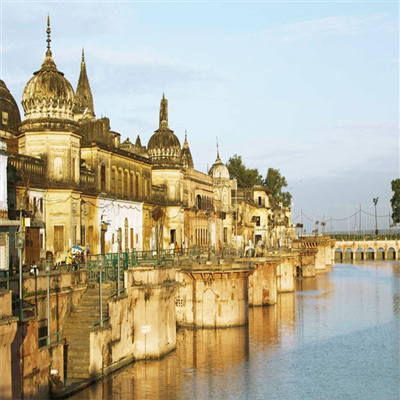
Treta Ke Thakur temple

Treta Ke Thakur
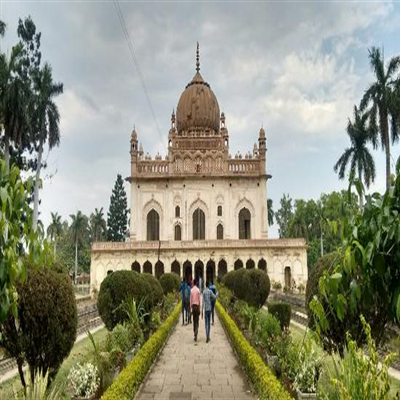
Gulab Bari Masoleum
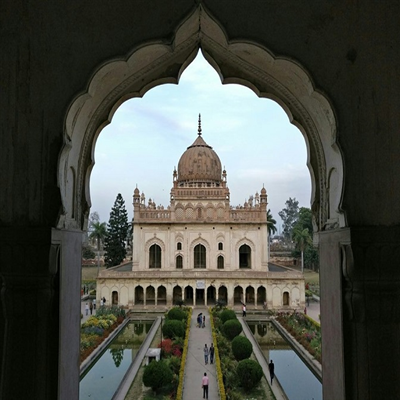
Gulab Bari Masoleum
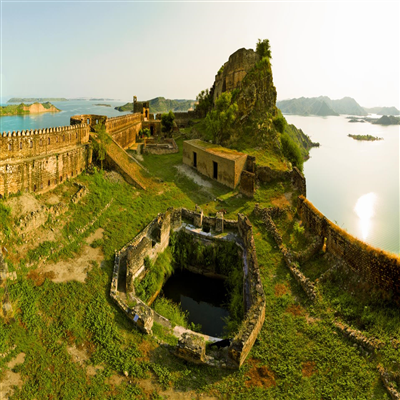
Ramkot Fort
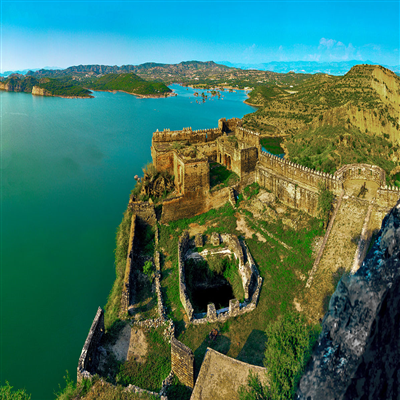
Ramkot Fort
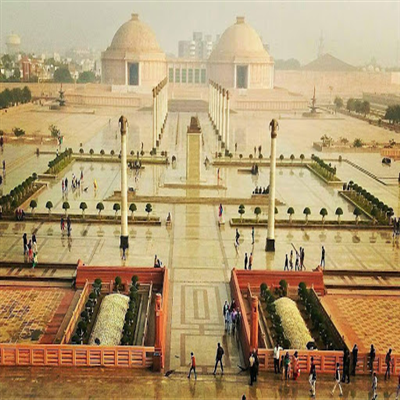
Ambedkar Park, Lucknow
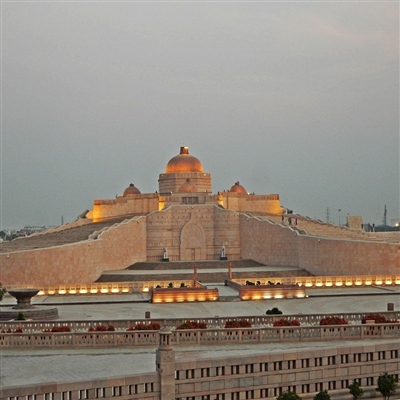
Ambedkar Park, Lucknow

Ambedkar Park, Lucknow
Day : 14 - The last day of the trip
On the last day of the trip, we can catch up with some shopping from Lucknow city. More city sights and food tours until it is time to drop you off to the airport to catch your return flights home.
![]()